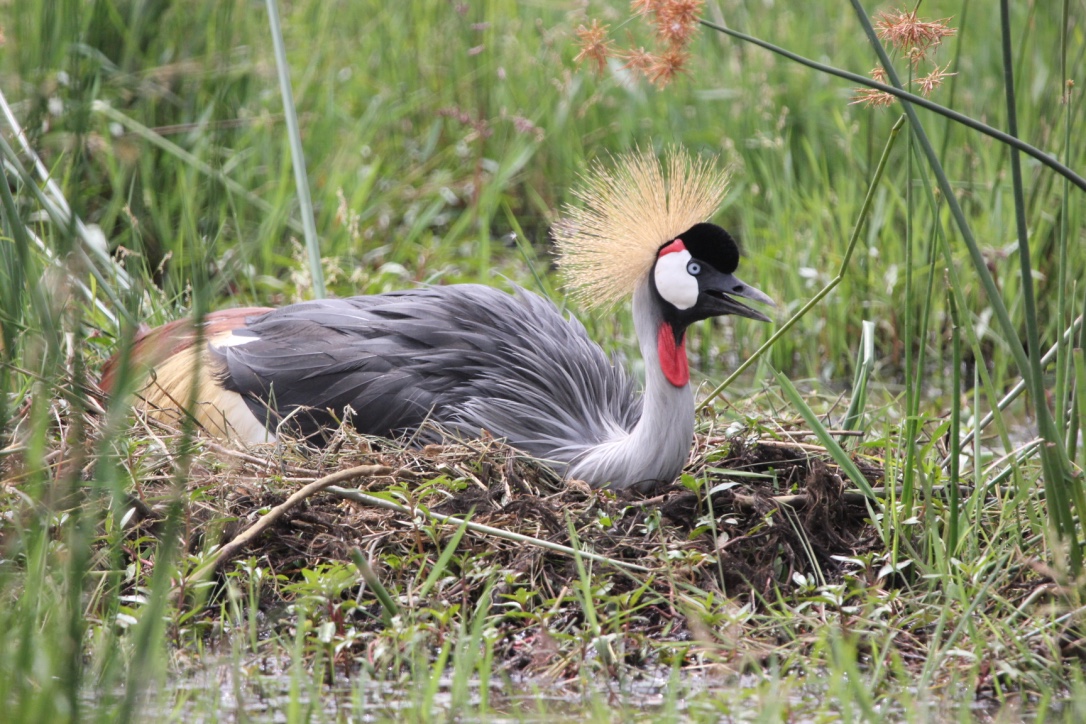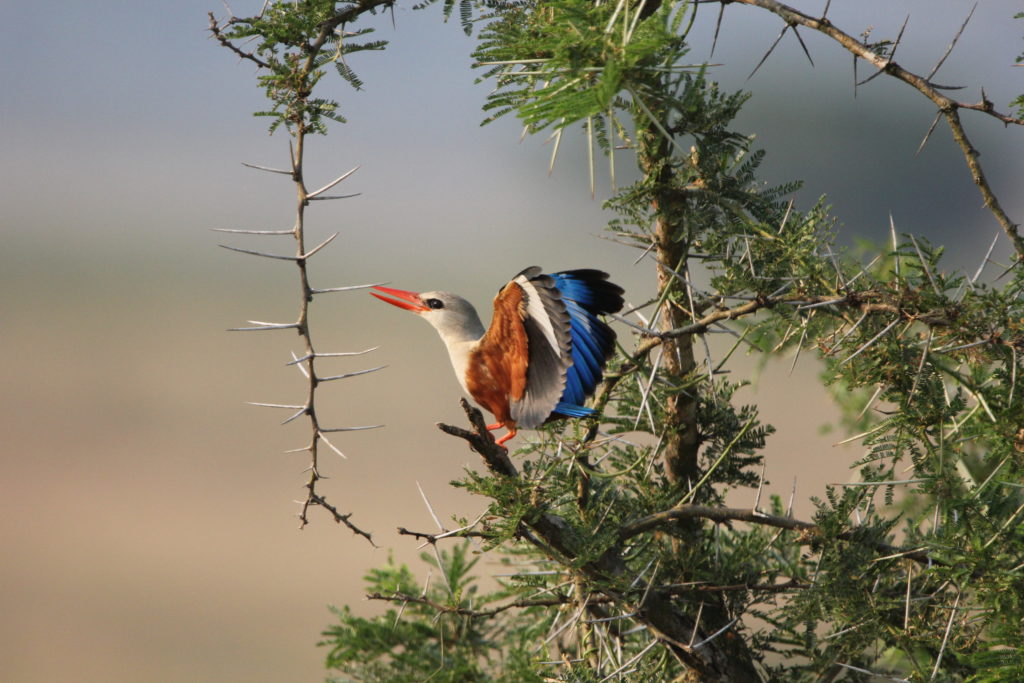
Uganda, the pearl of Africa is a tourist destination of unmatchable splendor. The country is gifted with a plethora of wildlife which is dispersed within an array of scenic landscapes. The country is gifted with 13 landscape categories and 22 main vegetation types (with 96 subtypes) which makes it a compact gem with over 18,783 species of flora and fauna! These landscapes, although majorly known to be rich in biodiversity, are actually part of a wider scale of ecosystems and habitats. These birds of Uganda ecosystems are distributed across different regions in the country to form an enduring grandeur that is teeming with a remarkable diversity.
The ecosystems range from the snow-capped peaks of the Rwenzori Mountains, the high altitude montane forests, the open waters of different lakes, the spectacle of islands, the unique blend of semi-arid woodlands, the savannah and forest communities, the wealth of montane vegetation to the forest-fringed crater lakes that stud the rift valley floor and escarpments. The country has an extraordinary amount of diversity in both terrestrial and aquatic habitats and it varies across ethnicity, gender, flora and fauna.
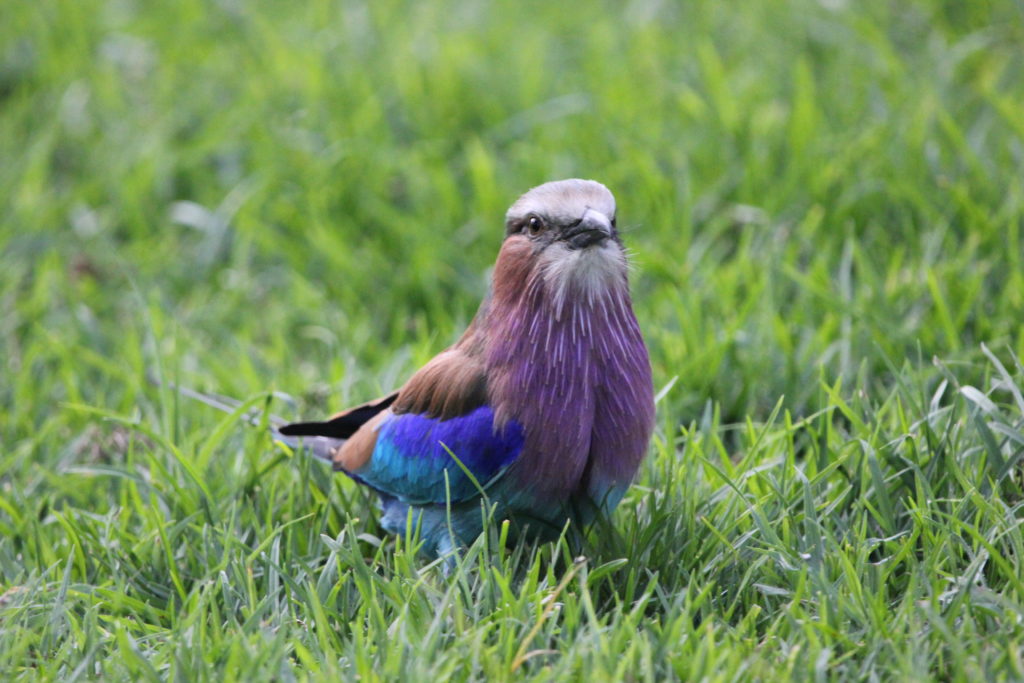
Those different ecosystems are therefore punctuated by the profusion of different flora and fauna and are known to support a great number of bird species. The country boosts an estimated 1061 bird species, making it the leading African birding safari destination with over 50% of Africa’s bird richness and 11% of the world’s bird population. Of the country’s bird species, 15 are endangered and 11 are vulnerable; several species are classified as threatened at the global (e.g. Shoebill B. rex, Grey-crowned Crane B. regulorum) and regional (e.g. White-backed Night Heron G. leuconotos, Rufous-bellied Heron A. rufiventris) levels.
Within the country, there are a number of areas that are known to host a phenomenal number of birds. These areas are labelled to be of a great significance and are identified as Important and endemic Bird Areas by Birding International. Three endemic bird areas (EBAs) are known to partly lie within Uganda. These include the Albertine Rift mountains, the Eastern Democratic Republic of Congo lowlands; and the exciting Kenyan mountains. The country has over 30 restricted range species, 24 of which can only be spotted within the Albertine Rift.
On top of these endemic bird areas, the country also glows with a number of Important Bird Areas which are 30 in number and cover 7% of the country. These IBAs are distributed within five regions of the country: West, South west, East, north-west and south-central region (Lake Victoria Basin.) The west, near Uganda’s border with DRC has 6 IBAs, the Southwest has four, the south-central has eight, the East has 7 and the northwest has five. Examples include, Queen Elizabeth National Park (west) Bwindi Impenetrable National park (southwest) Mabamba and lutembe bay (south-central) Budongo forest (northwest) and Mount Elgon national park in the East.
Birds of Uganda and the birding sites in Uganda National parks. These include:
Bwindi impenetrable national park birds of Uganda
Elevation: 1190 – 2607m above level
Bird species recorded: 357 species
Habitat: Medium-altitude (moist evergreen) forest, montane forest with patches of bamboo (Arundinaria) and montane marshes.
Although majorly known for the mountain gorillas, Bwindi Impenetrable National Park is a bird watchers’ haven! The park is known to host an estimate of 347 species of birds. Within the misty forests, one can find 10 of the 26 globally threatened species in Uganda, five of which are vulnerable. The forest is gifted with 23 (90%) Albertine Rift endemics with examples like African Green Broadbill and the Chapin’s Flycatcher among others.
Mabamba bay birding site in Uganda
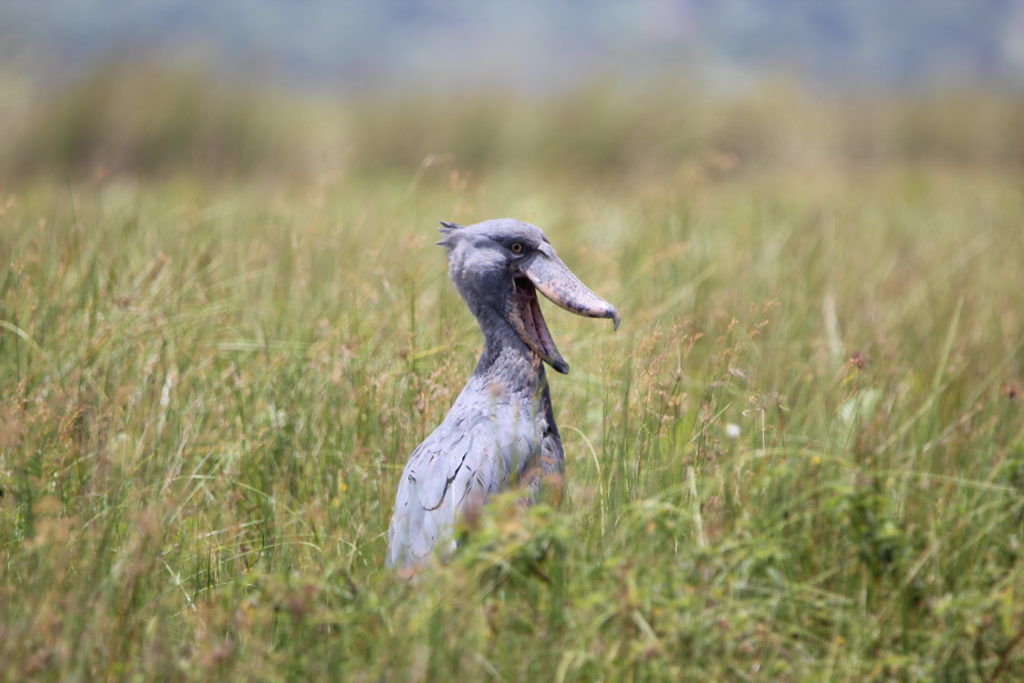
Mabamba Shoebill Excursion is the most popular birding site in Uganda to observe the rare Shoebill stork, which is the most sought-after bird in Uganda. The 25 square kilometre large and extensive wetland is located along the northern shores of Lake Victoria, near Entebbe town. The marsh stretches through a narrow and long bay that is fringed with papyrus towards the main body of Lake Victoria and is punctuated by over 260 bird species.
The bay has grown into an exceptional and phenomenal birding site and was awarded the title RAMSAR and as well labelled an Important Bird Area and a wetland of International Importance. The place has both migratory and resident birds, some of which are globally threatened. Examples include the Blue swallow and the Papyrus Gonolek among others.
Lake Mburo birds of Uganda.
Lake Mburo National Park has an extensive linked system of wetland that blends into a savannah grassland and woodland. The acacia dotted savannah, various thickets, swamps, forested areas and lake shores support the profusion of over 317 species of birds. Some of the common birds encountered include the Emerald-spotted Wood-dove, Speckled Mousebird, Green Wood-hoopoe, Common Scimitarbill, African Grey Hornbill, Marico sunbird, Nubian Woodpecker, and the Northern Black Flycatcher among others. Of the 317 bird species, 35 are raptors with examples like the African White-backed, Long-crested and Martial Eagles, White-headed Vultures, Black-chested, Brown and Banded Snake Eagles, Shikra, Gabar, Lizard and Augur Buzzards and the African Hawk among others.
Kibale national park birding
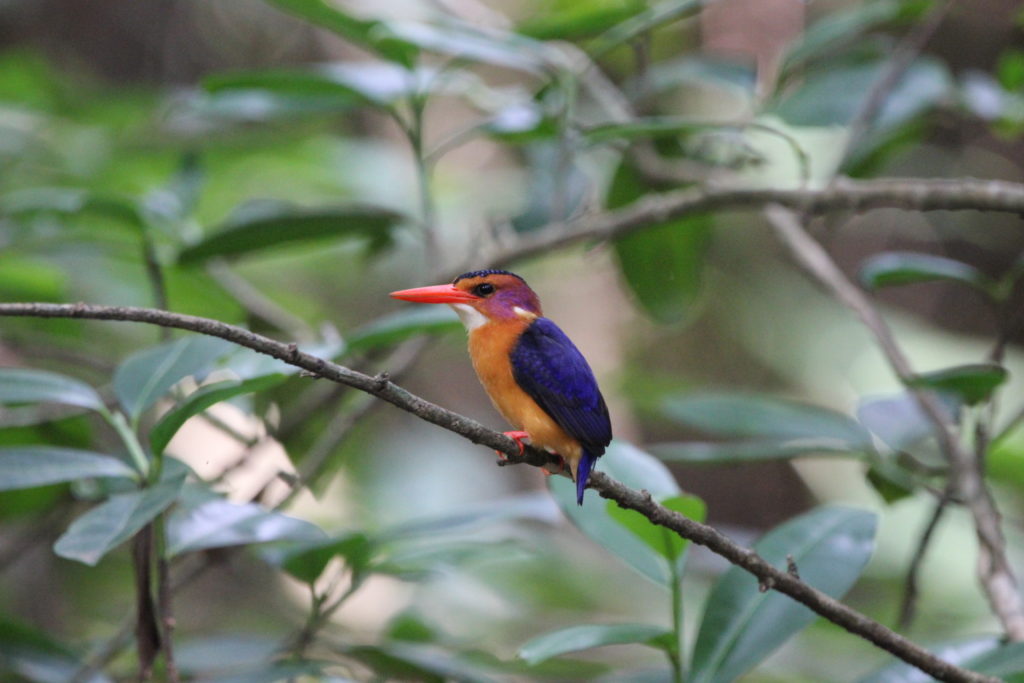
Birds Recorded: 340 species
Habitat: The forested section 77% of the park is covered by medium altitude moist evergreen forest in the north and medium altitude semi-deciduous forest at lower altitude in the south. The remaining 23% consists of grassland, swamps and some plantations with exotic conifers. In Kibale National Park, bird watchers look out for the Nahan’s Francolin, an endangered species found in three other forest reserves, the Forest Ground-thrush recorded in only two other IBAs.
Other interesting species include Yellow-spotted Nictor, Yellow-ramped Tinkerbird, Speckled Tinkerbird, Little Greenbul, Superb Sunbird, African Pitta, White-thighed Hornbill, Grey-winged Robin, Blue-shouldered Robin-chat, Yellow-spotted Barbet, Black-billed Turacco, White-naped Pigeon, Green-breasted Pitta, Purple-headed Starling, Red-chested Flufftail, Joyful Greenbul, Cabanis Greenbul, Grey-throated Tit-flycatcher, Scarlet-tufted, Green-throated, Purple-breasted Sunbirds, White-bellied Crested Flycatcher, Masked Apalis, Tiny Sunbird, White-collared Olive-back and the Black bee-eater any many others.
Mabira forest reserve birds
Bird Species Recorded: 300 species.
Many species of the Guinea-Congo Forests biome are not well-represented in other protected areas in Uganda, for instance; Nahan’s Francolin, Black-Shouldered Nightjar, Capuchin Babbler, Yellow and Grey Longbills, Yellow-Mantled Weaver. The site also holds one species of the Sudan-Guinea Savanna biome and four of the Afrotropical Highlands biome. There are over 10km of well maintained trail systems for birding nature walks.
Murchison falls birding

Birds recorded: 460 species.
The vegetation is characterized by savannah, riverine forest and woodland. There are many bird species including the rare Shoebill.
Habitat: Iron wood forest, riverine forest, dry and moist woodlands with grassy understory, Borassus palm savanna grassland with termitaria, papyrus lakes and rivers.
Launch Trips on the Nile
One of the highlights of a visit to Murchison Falls National Park is the launch trip from Paraa to the bottom of Murchison Falls. There is a variety of birds like Herons, Commorants, Ducks, Bee-eaters, Fish Eagles, Kingfishers and sometimes the rare shoebill. The launch trip from Paraa to the falls (17km) and back takes about three hours. There are many birding trails in Murchison.
Semliki
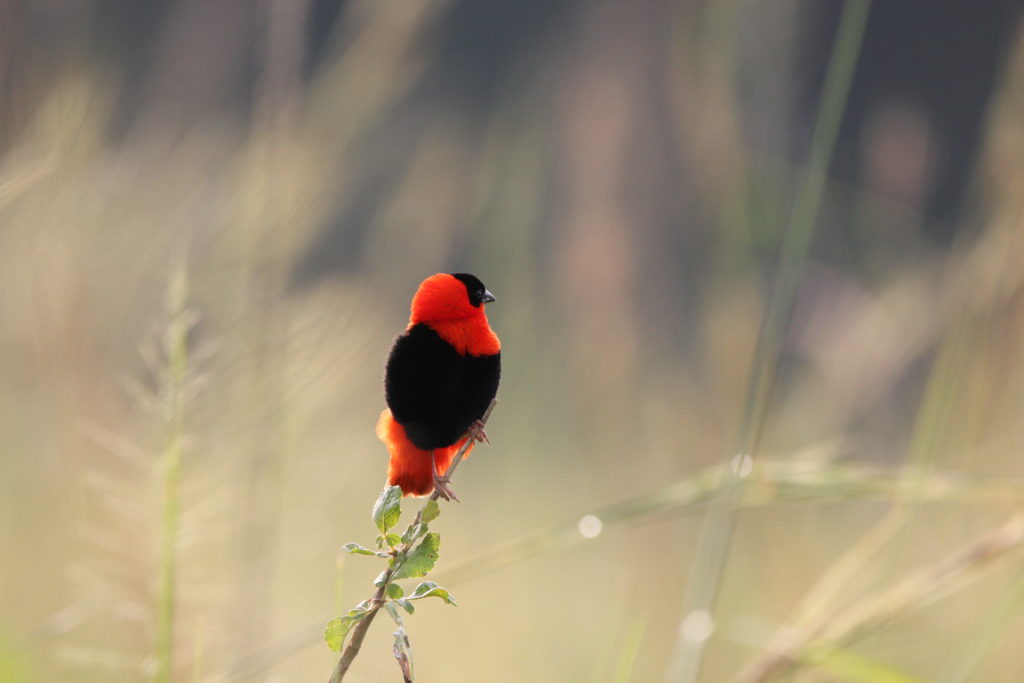
Birds recorded: 435 species
Habitat: Moist semi deciduous forest, most iron wood-dominant with patches of swamp forest and aquatic habitat represented by forest streams and ox bow lakes with adjacent swamps.
Jungle life in Semuliki National Park is breathtaking especially for birders, primate, butterfly and plant lovers. The jungle walk takes one up to the meandering River Semliki, the only one of its type in East Africa. You may also see a wide range of forest and water birds. Visitors can also come with fishing facilities for sport fishing along the river
Rwenzori birds and birding sites in Uganda
Recorded birds: 217 species.
In total, 217 species have been recorded in the park. The park contains 18 restricted range species Albertine endemics, the second highest in Uganda to Bwindi Impenetrable National Park which has 24 restricted range species. In addition, the park has 60 of 86 afro tropical highland biome species, the second highest of these after Bwindi Impenetrable. They include some rare and spectacular birds like the Rwenzori Turaco, Bamboo Warbler, Golden-winged Sunbird, Scarlet-tufted Malachite Sunbird and Stuhlmann’s Double-collared Olive-back.
There are also 17 species of the Guinea-Congo Forest Biome but all are well represented in other sites.

